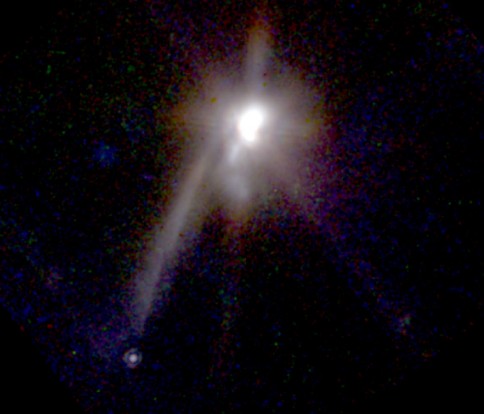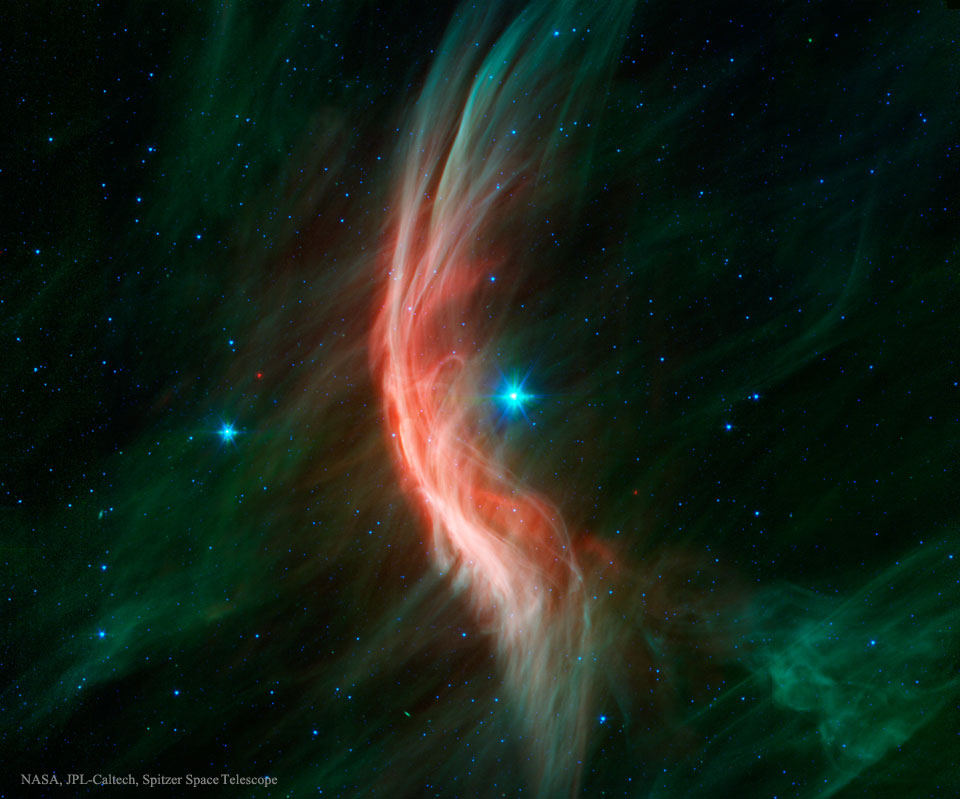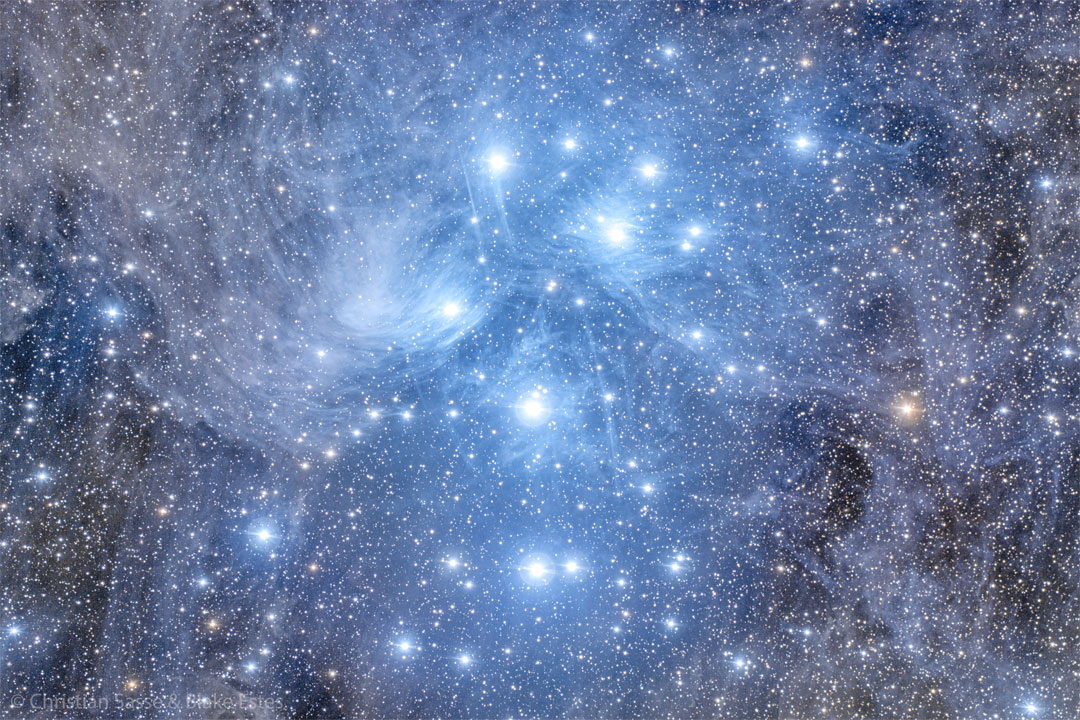
1998年05月29日:一颗外太阳系行星?-(An Extrasolar Planet?)--原图下载
Credit:S. TerebeyExtrasolar Research Corp.,NASA
说明: 这张哈伯望远镜的红外波段照片, 可能是第一张外行星的直接影像。照片内容为位在 金牛座, 距我们约450光年, 一个非常年轻的双星系统。这个双星系统的 编号是 TMR-1 ─ 金牛座 分子环星 1号 (Taurus Molecular Ring star 1), 它仍然埋在 诞生它的尘埃云里, TMR-1系统 及 尘埃云发出 很强烈的红外光辐射, 造成照片上的亮区。由 双星系统 向左下方延伸的丝状物 所指向的星体, 很可能就是一个外行星, 天文学家相信, 这是颗被双星系统 重力驱逐出去的"脱缰行星" 。 丝状物显出它走过的路径, 它和中央主星的现在距离, 大约是地球与太阳距离 的1500倍。从恒星演化模型, 推估这颗行星和双星系统 的年龄只有30万年, 这颗行星的质量可能是木星质量的 2-3倍。 短期之内, 天文学家将继续 观测这颗行星的运动, 而未来的光谱观测分析, 也应该能告诉我们这颗行星的组成是什么。 虽然这个 和其他 关于外行星物体 和原行星盘 的 初期发现, 并没有找到和我们 本太阳系 相似的外太阳系, 但是它们的存在, 强烈暗示行星形成 是很多元化且常见的过程。
原文:
Credit:S. TerebeyExtrasolar Research Corp.,NASA
Explanation: This infrared Hubble Space Telescope view may contain the first everdirect image of a planet outside our own solar system.The picture shows a veryyoung double star located about 450light-years away towardthe constellation of Taurus.Cataloged as TMR-1 (Taurus Molecular Ring star 1),the binary system is stillembedded in the dust cloud that formed it.This double star and dust cloud are the brightest grouping inthe picture, glowing strongly at infrared wavelengths.A filament extends from the binary system toward the lower left andpoints toward the spot of light representing thecandidate planet.Astronomers believe thisplanet is a "runaway" object which wasgravitationally ejected, the filament tracing the path to its presentlocation at about 1500 timesthe Earth-Sun distance from the parent star system.Models suggest that the planet andbinary system area mere 300,000 years old, with theplanet having a mass of about 2 to 3 Jupiters.Future observations to look for the planet'scontinued runaway motionand spectral signatures should be able to confirmthe nature of this object.While this and othertantalizing discoveries ofextrasolar planetary objects andprotoplanetary disksdon't seem to offer directexamples of solar systemslike our own, they do strongly hintthat planet formation is a varied and common process.






评论